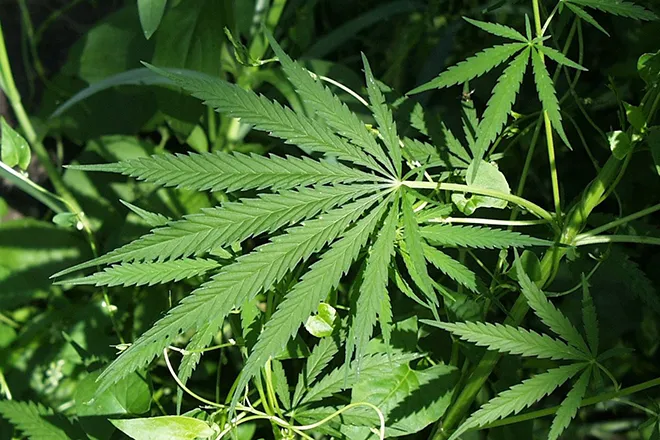
Colorado job growth this year projected at 1.4%
Job growth in Colorado is expected to reach 1.4 percent by the end of 2020, down from the state’s 2019 job growth of 2.1 percent, according to a new study by Kiplinger that assessed state economic outlooks.
Colorado ranked eighth among the 50 states and the District of Columbia based on its projected job growth this year, according to the Kiplinger analysis. The state’s current jobless rate is 2.8 percent.
Generally, tax revenues flowing to states should remain healthy in the next several quarters due to rising incomes, modest inflation and low unemployment, Kiplinger reports. State spending should rise only modestly in the coming year, according to the report, and states are putting more money in their rainy-day accounts.
But regions are also struggling somewhat due to a number of financial challenges. The trade war between the United States and China is hurting Midwest farmers, while New England growth is slowing because of a lack of skilled workers, the report said.
2020 Economic Outlooks, State by State
State | Population | Jobless Rate | 2019 Job Growth | 2020 Job Growth | Job Growth Rank Based on 2020 Data |
Nevada | 3,034,000 | 4.1% | 3.0% | 2.0% | 1 |
Utah | 3,161,000 | 2.8% | 3.0% | 2.0% | 1 |
Florida | 21,299,000 | 3.3% | 2.5% | 1.9% | 3 |
Idaho | 1,754,000 | 2.9% | 2.5% | 1.8% | 4 |
Arizona | 7,172,000 | 5.0% | 2.5% | 1.7% | 5 |
Washington | 7,536,000 | 4.6% | 2.6% | 1.7% | 5 |
Texas | 28,702,000 | 3.4% | 2.3% | 1.6% | 7 |
Colorado | 5,696,000 | 2.8% | 2.1% | 1.4% | 8 |
Oregon | 4,191,000 | 4.0% | 1.9% | 1.3% | 9 |
Alabama | 4,888,000 | 3.1% | 1.8% | 1.2% | 10 |
Georgia | 10,520,000 | 3.6% | 1.7% | 1.2% | 10 |
North Carolina | 10,384,000 | 4.2% | 1.6% | 1.0% | 12 |
South Dakota | 882,000 | 2.9% | 2.1% | 1.0% | 12 |
California | 39,557,000 | 4.1% | 1.8% | 0.9% | 14 |
South Carolina | 5,084,000 | 3.2% | 1.5% | 0.9% | 14 |
Tennessee | 6,770,000 | 3.5% | 1.7% | 0.9% | 14 |
Iowa | 3,156,000 | 2.5% | 0.7% | 0.8% | 17 |
Kentucky | 4,468,000 | 4.4% | 1.1% | 0.8% | 17 |
Mississippi | 2,987,000 | 5.2% | 1.4% | 0.8% | 17 |
Missouri | 6,126,000 | 3.2% | 1.2% | 0.8% | 17 |
Rhode Island | 1,057,000 | 3.6% | 1.3% | 0.8% | 17 |
Virginia | 8,518,000 | 2.8% | 0.8% | 0.8% | 17 |
Delaware | 967,000 | 3.4% | 1.0% | 0.7% | 23 |
Kansas | 2,912,000 | 3.2% | 1.0% | 0.7% | 23 |
Massachusetts | 6,902,000 | 2.9% | 1.0% | 0.7% | 23 |
Minnesota | 5,611,000 | 3.3% | 0.4% | 0.7% | 23 |
Montana | 1,062,000 | 3.3% | 1.2% | 0.7% | 23 |
Nebraska | 1,929,000 | 3.1% | 0.6% | 0.7% | 23 |
New Hampshire | 1,356,000 | 2.5% | 1.6% | 0.7% | 23 |
New Mexico | 2,095,000 | 4.9% | 1.9% | 0.7% | 23 |
Washington, D.C. | 702,000 | 5.5% | 1.1% | 0.7% | 23 |
Arkansas | 3,014,000 | 3.4% | 1.1% | 0.6% | 32 |
Indiana | 6,692,000 | 3.3% | 0.9% | 0.6% | 32 |
New Jersey | 8,909,000 | 3.2% | 1.2% | 0.6% | 32 |
Illinois | 12,741,000 | 4.0% | 1.1% | 0.5% | 35 |
Maine | 1,338,000 | 2.9% | 0.8% | 0.5% | 35 |
Maryland | 6,043,000 | 3.8% | 0.3% | 0.5% | 35 |
New York | 19,542,000 | 4.0% | 1.1% | 0.5% | 35 |
Pennsylvania | 12,807,000 | 3.9% | 0.7% | 0.5% | 35 |
Vermont | 626,000 | 2.1% | 0.7% | 0.5% | 35 |
West Virginia | 1,806,000 | 4.6% | 0.9% | 0.5% | 35 |
Hawaii | 1,420,000 | 2.7% | 0.4% | 0.4% | 42 |
North Dakota | 760,000 | 2.4% | 0.6% | 0.4% | 42 |
Ohio | 11,689,000 | 4.1% | 0.6% | 0.4% | 42 |
Wisconsin | 5,814,000 | 3.1% | 0.4% | 0.4% | 42 |
Wyoming | 578,000 | 3.7% | 1.5% | 0.4% | 42 |
Alaska | 737,000 | 6.2% | 1.1% | 0.3% | 47 |
Oklahoma | 3,943,000 | 3.2% | 0.5% | 0.3% | 47 |
Connecticut | 3,573,000 | 3.6% | 0.4% | 0.2% | 49 |
Louisiana | 4,660,000 | 4.3% | 0.1% | 0.2% | 49 |
Michigan | 9,996,000 | 4.2% | 0.4% | 0.2% | 49 |
Source: Kiplinger.com
















